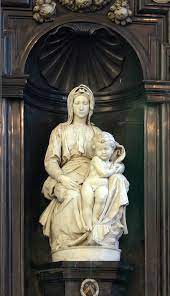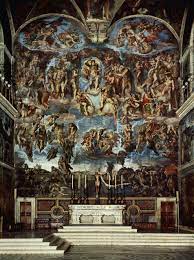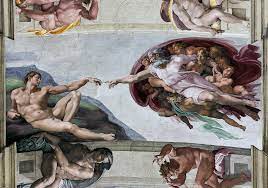
”The best artist has that thought alone which is contained within the marble shell; The sculptor's hand can only break the spell To free the figures slumbering in the stone.” Michelangelo Buonarroti
A piece of art speaks volumes so this blog will showcase some of Michelangelo's works and just a little bit about his genius in text.
Michelangelo was born in 1475, he created masterpieces such as Pietà 1498-99, David 1501-04, Madonna and Child 1501-04, Sistine Chapel 1508-12, Moses 1513-15 Medici Chapels 1520-33 in total he created 182 artworks. Additionally he was an architect, poet and writer of plays and operas.
At the tender age of 13 Michelangelo was apprenticed to Ghirlandaio, the master in fresco painting, perspective, figure drawing and portraiture who had the largest workshop in Florence. 1 year later he went to the house of Medici under the patronage of Lorenzo who was in awe of his talents, Michelangelo studied classical sculpture in his palace gardens from 1489 to 1492.
To perfect his craft the friars at Santo Spirito allowed Michelangelo to study anatomy on the corpses at the church's hospital, these studies were vital in his remarkable detailed works especially the prominent jugular on David and the extensor digiti minimi muscle on Moses along with defined muscles and prominent veins on other works.
Michelangelo, the master, filled his sculptures with as much drama and potential energy as possible, they seem ready to move, to rise up, walk away, the positioning of limbs, tensioning of muscles and posture all perfectly anatomically crafted. His attention to detail is remarkable, draping of cloth, the softness in his lace veils, expressions, gestures, use of light and finishing of the marble all add realism to his works.


With David Michelangelo had noticed the phenomenon that, when some people get excited, their jugular vein temporarily distends, just as other people flush when they’re emotional. He’s noticing a physiological change in somebody who’s getting ready to exert.

Michelangelo's Moses, is very complex, focus on the little finger of the right hand which is slightly elevated this creates a ripple at the root of the little finger. If you continue to look along the forearm the extensor digiti minimi muscle is visible this is only pronounced when the little finger is lifted or moved a bit. Otherwise, it is mostly invisible. All this is to describe one little muscle on the forearm of that sculpture.
Imagine the details and biology behind all the other muscles put together. Capturing such intricate details some 500 years ago is remarkable, this makes art timeless. This gives the art its true beauty. This is the reason why Michelangelo is considered one of the greatest artists ever to have walked this planet.
Giorgio Vasari, proposed that Michelangelo's work transcended that of any artist living or dead, and was "supreme in not one art alone but in all three."
















Comentarios